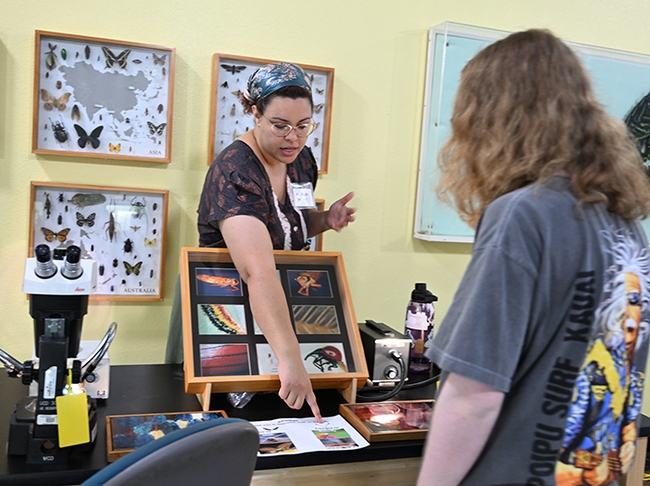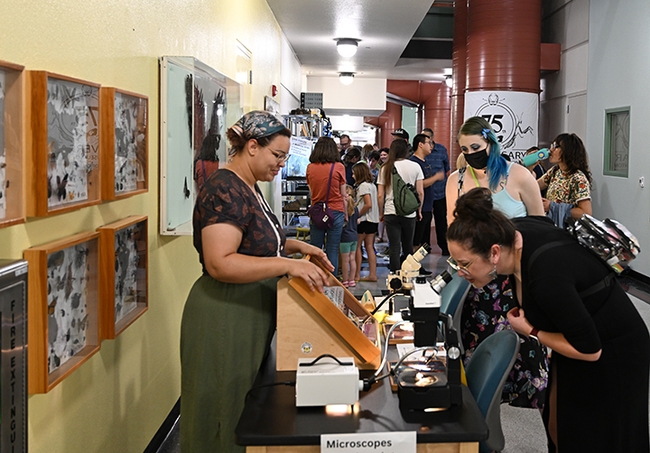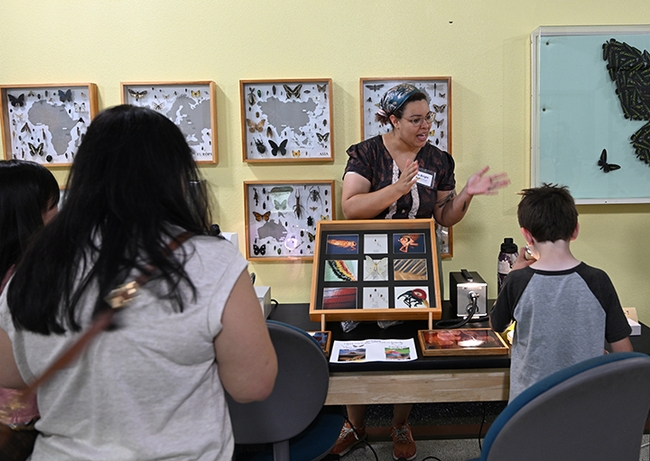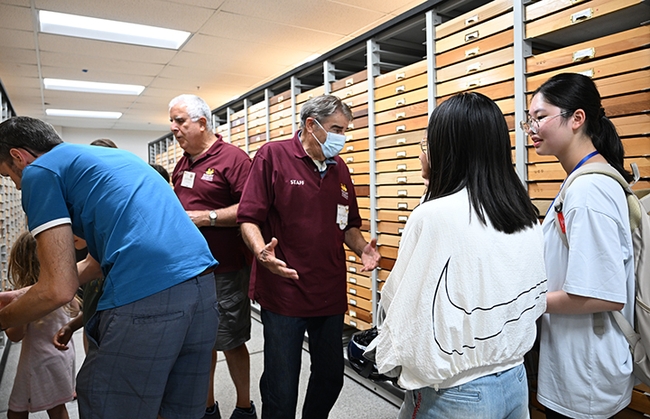
That was a key question asked at the Bohart Museum of Entomology's annual Moth Night, held both indoors and outdoors on the UC Davis campus on Saturday, July 20.
Doctoral student Iris Quayle of the laboratory of Professor Jason Bond, director of the Bohart (and the Evert and Marion Schlinger Endowed Chair of UC Davis Department of Entomology and Nematology, and associate dean, Agricultural Sciences, UC Davis College of Agricultural and Environmental Sciences), staffed a station explaining the differences.
Some major points:
- Both butterflies and moths are members of the order Lepidoptera and both are pollinators.
- Both go through a complete metamorphosis, from egg to larva (caterpillar) to pupa to adult. Butterflies pupate in a chrysalis while a moth pupates in a cocoon.
- A butterfly's antennae have club-like tips whereas moths have feathery, thick, comb-like antennae.
- Butterflies are diurnal or active during the day, while moths are generally active at night. But some moths, including the white-lined sphinx moth, are both diurnal and nocturnal (active at night).
- Generally, a butterfly's wings are brightly colored and moths are dull in color, but not always. Some moths, such as the Ranchman's tiger moth, are beautifully colored.
Globally, scientists have described about 18,000 species of butterflies and 180,000 species of moths, "and hundreds of newly named species are added every year," according to Jeff Smith, curator of the Lepidoptera collection at the Bohart. "It's also believed that we may know of no more than 10-15 percent of the species actually out there, with the small 'micro-Lepidoptera' likely with over 90 percent of the species in the world still unknown. This emphasizes the importance of preserving natural environments so things don't go extinct before we can ever recognize their importance to the Earth and their relationships in their habitats."
The Bohart Museum's global collection of 8 million insects includes some 825,454 specimens of moths and butterflies, including 618,750 moths, ranging in size from the huge Atlas moths (10-inch wingspan) to the extremely tiny (4 mm wingspan) leafminer moths.
Founded in 1946, the Bohart Museum is located in Room 1124 of the Academic Surge Building, 455Crocker Lane, UC Davis campus. The open houses are free and family friendly. The next open house is on Saturday, Sept. 28 from 1 to 4 p.m. The theme: "Museum ABC's: Arthropods, Bohart and Collecting." Check out the website at https://bohart.ucdavis.edu or email bmuseum@ucdavis.edu for more information.
Attached Images:

Iris Quayle of the laboratory of Jason Bond, director of the Bohart Museum, explains the differences between moths and butterflies. (Photo by Kathy Keatley Garvey)

UC Davis doctoral candidate Iris Quayle answering questions from the visitors at the Bohart Museum open house. (Photo by Kathy Keatley Garvey)

Jeff Smith (left), curator of the Lepidoptera collection at the Bohart Museum, and Bohart associate Greg Kareofelas talk to open house attendees and show moth specimens. (Photo by Kathy Keatley Garvey)